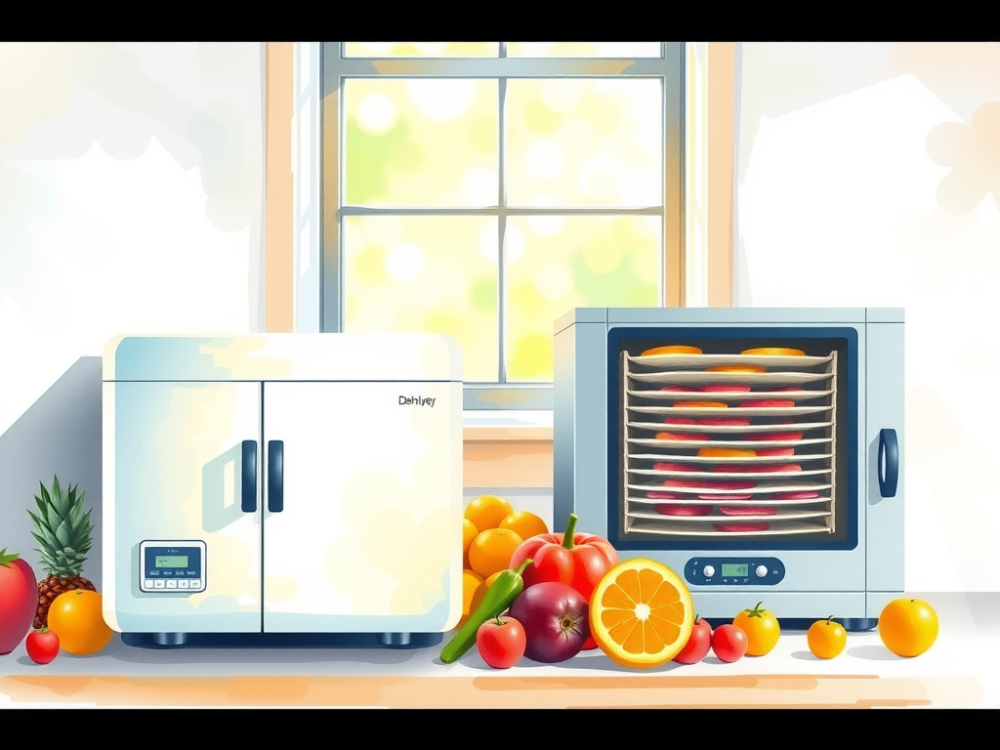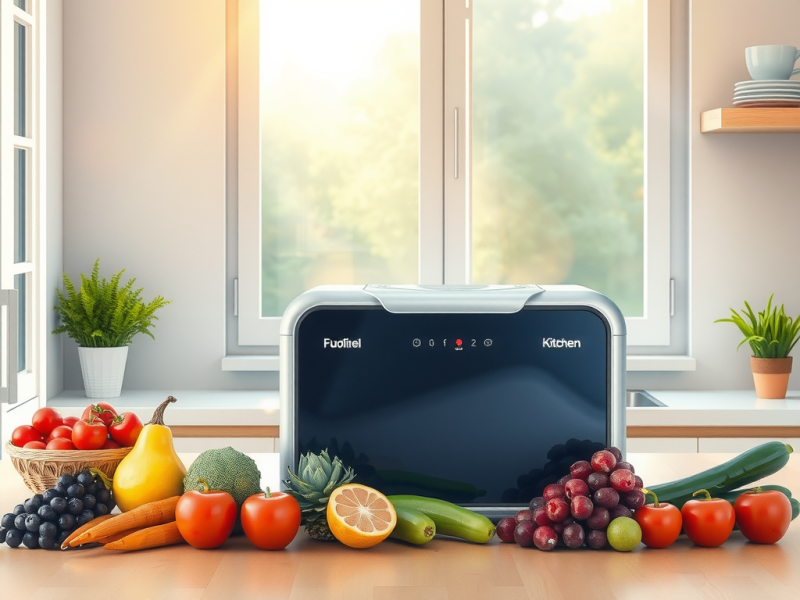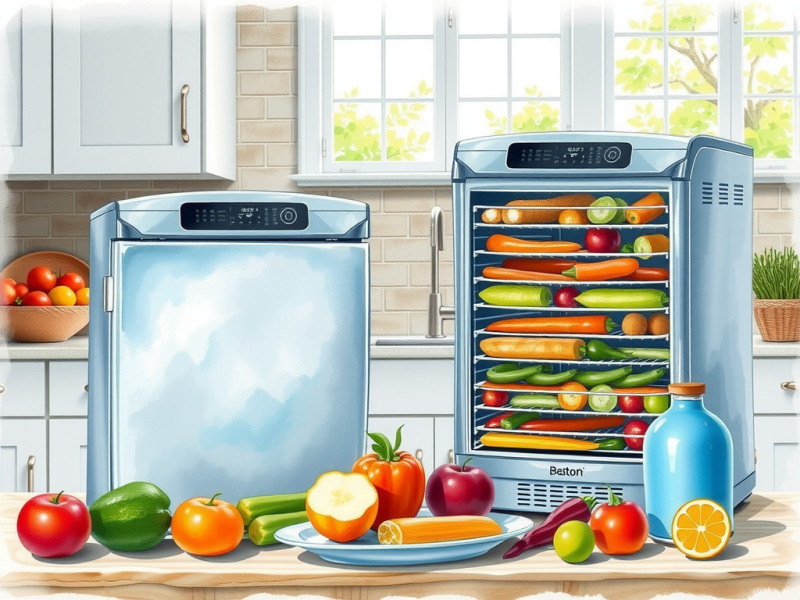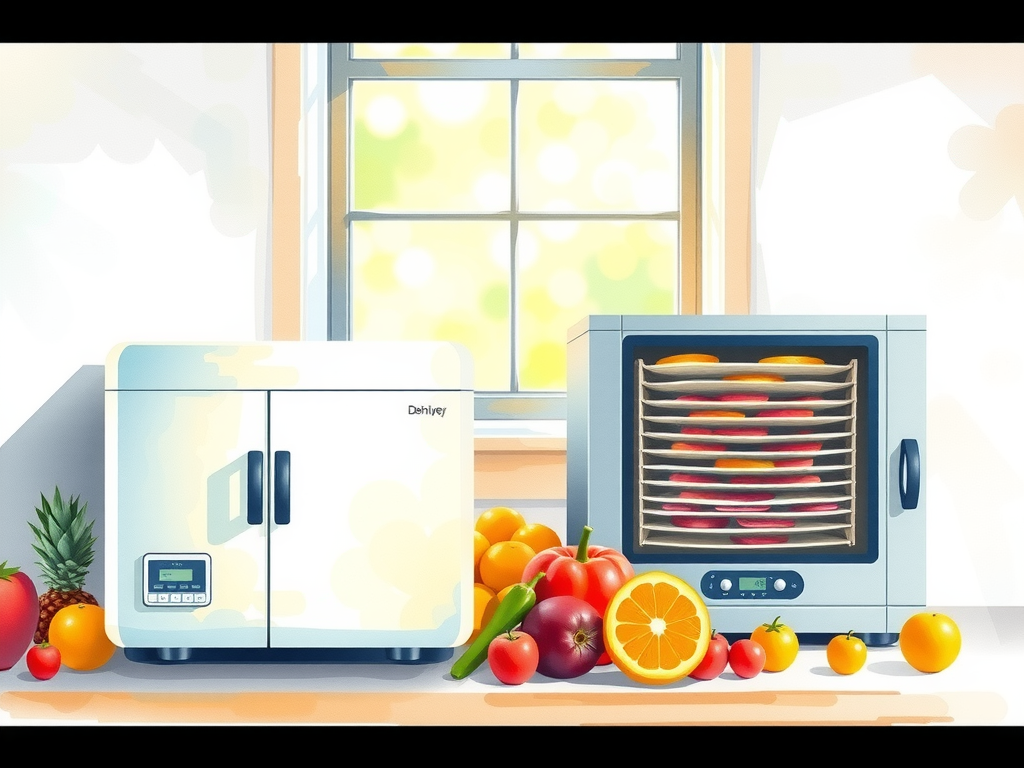
Food preservation is key for extending the shelf life of meals. Freeze drying and dehydrating are two methods that effectively remove moisture.
Both techniques prevent spoilage but differ in their nutritional profiles and costs.
Freeze drying retains up to 97% of nutrients, while dehydrated foods are typically more affordable and quicker to prepare.
Dehydrated foods last from 1 to 5 years. Choose wisely for your culinary needs!
Click here to learn more about: freeze dryer vs dehydrator
Freeze Drying Techniques
Moisture removal is essential in food safety and storage.
Without moisture, bacteria cannot thrive, which extends the shelf life of foods. The freeze drying process maintains nutrients and flavor, making it ideal for long-term food storage.
Benefits of Freeze Drying
- Retains Nutrients: Freeze drying preserves up to 97% of vitamins, minerals, and antioxidants.
- Lightweight Food: Freeze-dried meals are lighter, making them perfect for camping and hiking.
- Long Shelf Life: Foods can last 15 to 25 years.
Assessing Food Suitability
Check the moisture content of foods like fruits, vegetables, and cooked meats. Test small batches to ensure the best results. This method excels at nutritional retention compared to dehydrators, providing excellent preservation quality for your pantry.
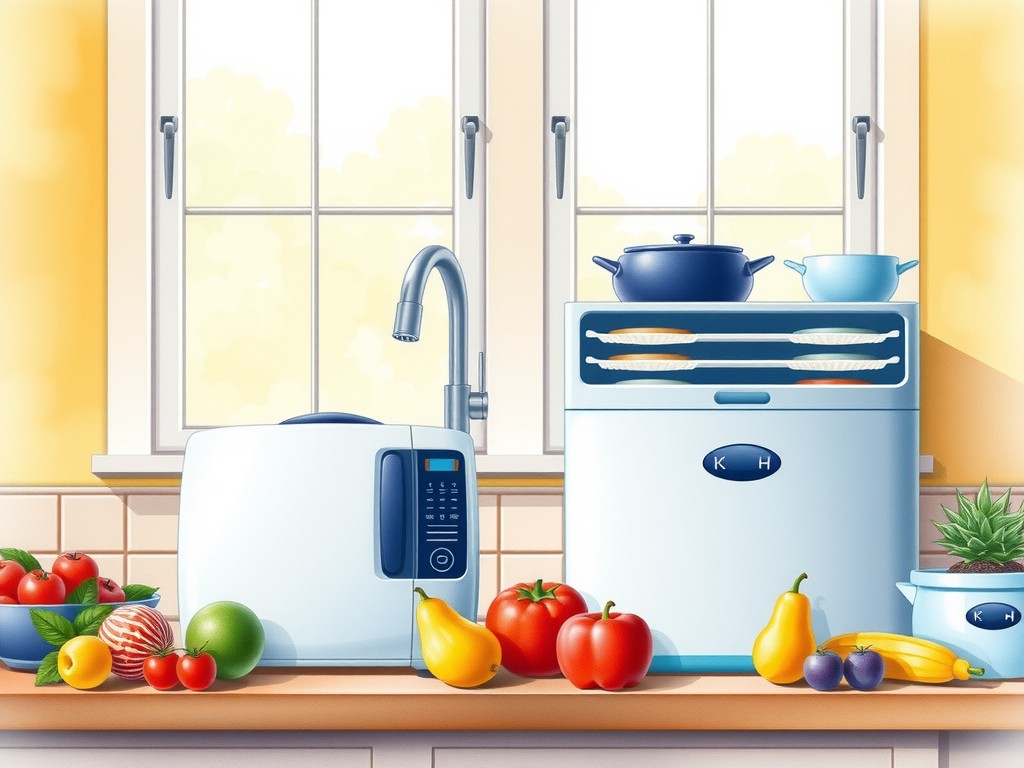
Dehydration Techniques
The food dehydrator uses heat (95°F to 160°F) and air circulation for moisture removal. While affordable and easy to operate, this method leads to some nutrient loss and changes food texture.
Benefits of Dehydrating
- Quick Drying: Faster than freeze drying, making it suitable for snacks.
- Cost-Effective: Equipment costs are lower compared to freeze dryers.
- Shorter Shelf Life: Dehydrated foods last 1 to 5 years.
Common Uses
Dehydrators are ideal for making jerky, drying herbs, and preparing snacks. While dehydrated foods are heavier, they are efficient for everyday use.
Choosing the Right Method
Deciding between freeze drying and dehydration depends on your needs. For long-term storage, freeze drying is superior. For quick and affordable snack preparation, a dehydrator works well. Both methods support food sustainability by reducing waste.
How Does Food Dehydrator Work
The process of food dehydration helps in effective preservation. A food dehydrator utilizes heat and airflow to remove moisture from food.
Effective moisture removal prevents spoilage and harmful bacteria growth.
Proper airflow is key to ensuring even drying, which helps maintain quality.
To achieve consistent results, cut food into uniform pieces.
Next, arrange the food in single layers inside the dehydrator. This boosts preservation efficiency and enhances flavor retention.
Maintaining uniformity across pieces is essential to avoid uneven drying. Follow these steps for best results:
- Cut foods into evenly sized pieces.
- Place them in a single layer in the dehydrator.
- Ensure sufficient airflow around each piece.
Comparing Nutritional Preservation Methods
Different preservation techniques affect vitamin retention. Freeze drying preserves food by freezing it and using a vacuum to sublimate water directly from ice to gas. This method retains up to 97% of nutrients, texture, and flavor. Freeze-dried foods have a shelf life of 15-25 years.
Dehydration, on the other hand, uses heat and air circulation to evaporate water. The drying process typically leads to some nutrient loss and changes the texture, making food shriveled and chewy. Dehydrated foods usually last 1-5 years. When choosing a method, consider the food type:
Use freeze drying for:
– Long-term storage of fruits and vegetables
– Retaining original flavor and nutrients
Use dehydration for:
– Quick snacks like jerky or dried herbs
– Affordable and easy preservation
Both methods contribute to food waste reduction and efficient food storage solutions. By knowing your food, you can select the best method for your needs.
Food Dehydration and Preservation
- Food dehydration effectively prevents spoilage and harmful bacteria growth by removing moisture.
- Freeze drying retains up to 97% of nutrients, making it the best choice for long-term food storage.
- Dehydrated foods typically have a shelf life of 1-5 years, while freeze-dried foods can last 15-25 years.
- Both preservation methods contribute to reducing food waste and provide efficient food storage solutions.
What Is The Drying Process Like
The drying process is essential for food preservation. This method removes moisture from food, allowing it to be stored longer.
First, food is prepared by cleaning and slicing it.
Second, the drying process begins using either heat application or freezing techniques.
Food cools down and must be stored properly to maintain its quality.
Freeze drying significantly retains flavor and provides a lighter texture. Dehydration can lead to a chewier consistency with some nutrient loss.
To monitor food during drying, check for moisture content regularly; using a food thermometer can help achieve the best results.
Stages of Drying
- Preparation: Clean and slice food before drying.
- Drying: Use heat application or freezer drying techniques.
- Cooling: Allow food to cool properly to maintain quality.
Freeze drying retains up to 97% of nutrients, making foods lightweight and crispy. Dehydration typically results in shriveled and chewy textures, with a reduced shelf life of 1-5 years.
Exploring Longterm Storage Options
Selecting proper containers for long-term storage is important for maintaining food quality. Using airtight containers, such as Mylar bags, glass jars, or vacuum-sealed bags, prevents moisture and pest contamination. When organizing stored food, label containers with contents and dates for easy identification.
Key Factors to Consider:
- Airtightness: Ensure containers are airtight to keep moisture out.
- Labeling: Clearly label containers to track contents and dates.
- Organization: Store similar items together for quick access.
Good organization reduces food waste and keeps your preserved food in excellent condition for long-term storage. Properly executed food storage solutions enhance shelf stability and ensure nutritional retention.
Food Drying and Storage
- Freeze drying can retain up to 97% of nutrients, making it a superior method for preserving food quality.
- Airtight containers are essential for preventing moisture and pest contamination, extending the shelf life of dried foods.
- Proper labeling of stored food helps in tracking contents and expiration dates, minimizing waste.
- Dehydrated foods typically have a shelf life of 1-5 years, depending on storage conditions and methods used.
Evaluating Costeffective Methods For Preservation
Evaluating the costs associated with different preservation techniques helps maximize benefits. Investments in equipment like freeze dryers can seem high, but they pay off over time.
Freeze dryers preserve up to 97% of nutrients and maintain texture and flavor.
They require high energy consumption and cost significantly more.
A food dehydrator is a more economical choice for quick snack preparation.
It operates at temperatures between 95°F to 160°F, leading to some nutrient loss. The average shelf life of dehydrated foods is 1-5 years.
When budgeting for preservation, consider:
- Initial Equipment Costs: Weigh the costs of freeze dryers against dehydrators.
- Energy Efficiency: Factor in energy consumption for each method.
- Long-Term Benefits: Assess the shelf life and nutrient retention of each method.
Choose the right method based on your needs and budget for effective preservation.
What Are The Health Benefits Of Each
Exploring the health benefits of different preservation methods reveals their impact on nutrient availability. Freeze drying retains more vitamins, minerals, and antioxidants. It excels at preserving the nutritional value of foods, making them ideal for long-term storage.
Freeze Drying Benefits
- Retains up to 97% of nutrients.
- Maintains original texture and flavor.
- Has a shelf life of 15-25 years.
Dehydrating Benefits
- Quick drying process.
- Affordable and easy to operate.
- Generally results in lightweight snacks like jerky.
- Foods last 1-5 years.
Incorporating both methods into a balanced diet can enhance meal variety. Use freeze-dried items for essential nutrients and add dehydrated snacks for everyday convenience. This approach supports food sustainability and reduces food waste.
| Preservation Method | Nutrient Retention | Shelf Life | Initial Costs |
|---|---|---|---|
| Freeze Drying | Up to 97% | 15-25 years | High |
| Dehydrating | Some nutrient loss | 1-5 years | Low |
Choosing Between Equipment Investments For Home Preservation
Understanding food preservation techniques is important for managing food at home. Freeze drying uses a vacuum to sublimate water from frozen food.
This method preserves nutrients, texture, and flavor.
Freeze-dried foods have a shelf life of 15-25 years.
This equipment can be costly and consumes a lot of energy.
On the other hand, a food dehydrator uses heat and air circulation. This technique dries food quickly, but the shelf life is shorter—about 1-5 years.
Dehydrators are generally more affordable and easier to operate, but they can lead to some nutrient loss.
Evaluating Your Options
When choosing between these methods, think about your personal preservation goals. Consider how often you will use the equipment and the savings from reduced food waste.
This evaluation will guide you in selecting the right preservation choice for your needs.
Tradeoffs of Each Method
Freeze drying retains up to 97% of nutrients, offering superior quality for long-term storage.
The end products are lighter and crispier, making them ideal for emergency food supplies or camping food.
In contrast, dehydrators are more suited for snack preparation, like making jerky or drying herbs. Each method has its unique benefits, but it’s essential to align your choice with your long-term food sustainability goals.
Food Preservation Methods
- Freeze drying preserves nutrients, texture, and flavor, with a shelf life of 15-25 years.
- Food dehydrators are more affordable and easier to operate, but have a shorter shelf life of 1-5 years.
- Freeze drying retains up to 97% of nutrients, making it ideal for long-term storage and emergency supplies.
- Dehydrators are better suited for snack preparation, such as making jerky or drying herbs.
Best Freeze Dryer For Home Use
Freeze Dryer Vs Dehydrator Benefits

